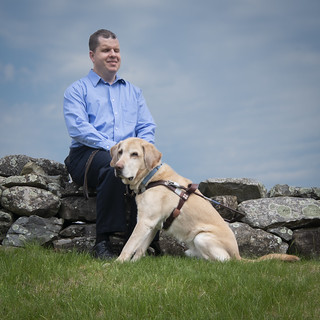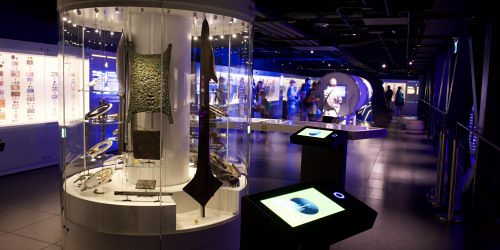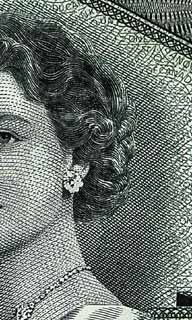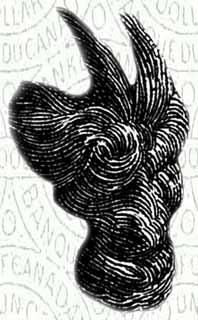
PREV ARTICLE
NEXT ARTICLE
FULL ISSUE
PREV FULL ISSUE
REVIEW: BANK OF CANADA MUSEUMTom Babinszki publishes the Blind Coin Collector blog. In July he spoke about tactile coin exhibits at a conference, and this month he followed up with a review of accessible coin exhibits at the Bank of Canada Museum. With permission, we're republishing his two posts here. -Editor Tactile coin exhibits
It was accepted. I didn't think much of it at the time, I thought it would be an interesting concept, but let's face it, coin collecting is not a common hobby among blind people. Thus, coin museums are generally as inaccessible as could be for anybody who needs a tactile experience. Here I am always quick to mention that not without exception, and though not many blind people visit coin museums, whenever I asked for a guided tour, most museums put a fantastic program together for me. Of course, if coin museums would be more accessible, probably more blind people would visit. Anyway, I thought it would be at least worth a discussion. Making a coin exhibit doesn't necessarily have to be too costly, and there are other advantages when it is made accessible for blind people. To my surprise, within a couple of weeks after the conference, three museums have contacted me to consult with them on how to make their coin exhibit more accessible for blind people. I was truly thrilled that it wasn't just me who thought it was a great idea. At the moment I don't have permission to give you more details about this work, but as soon as information becomes available I will post it here. For now, all I can say that there are some excellent ideas out there.
To read the complete article, see:
The Bank of Canada Museum Here's how Tom's work with the Bank of Canada Museum turned out. -Editor A few days after my presentation about accessible coin exhibits, I got a call from the Bank of Canada Museum, which was previously called the Currency Museum, to enquire about my presentation, and it turned into an on-site visit. I spent a day with the museum's employees where we discussed my ideas about accessible exhibits, coin collecting, accessible currencies and many other fun things.
I got a tour of the museum to discuss the accessible implementations they had. Though it was primarily about the tactile experience, it is impossible, and not even necessary to separate from accessibility and inclusion in general. Thus, I experienced the thorough approach on how the museum welcomes people with different needs and disabilities. There was a 3d representation of the devil's face note. It is the way the queen's hair looks into which you can see the devil's face. I have to be honest, it is a concept that I would more believe than understand, without any prior vision it simply doesn't make sense. Until, you can touch the 3d bank note, and a 3d representation of a devil's head. And it all falls into places and makes sense. It was a very clever choice of a numismatic concept. There were a few educational games where students can learn about money. I have to say, I have been to so many money museums where they created programs for kids, and the creativity is endless. One game was where kids can open doors and find things behind them. They have to identify the one, which wasn't used as money. In another game, they have to match the budget with spendings. A block represents the size of budget they pick, and they can match six types of spendings with it, until the weight of the budget they picked will be equal to the total spending. What I liked about this was that each object had different tactile marks, and in general, the different sizes were easy to distinguish. Yet another evidence of how just a little innovation can make a difference in accessibility. They also have a set of objects they can show visitors which they can touch, to learn about how money evolved, but making it relevant to local history with showing a silver beaver and a beaver pelt. Generally, I found what I would look for in an accessible program in a museum. I by no means want to say that everything needs to be accessible for all disabilities. It is practically impossible. But what is relevant is when anybody visits a museum, regardless of needs or background, they can find enough things to enjoy, learn from in the spirit of the institution's exhibit. As the conclusion of the day, we checked the museum's digital offerings, of which there is quite a bit. First of all, there is an extensive catalog of the objects held in the museum. There are educational materials, a blog, online resources, and games to learn about money, or the economy of Canada. When it comes to describing numismatic objects, it is not always possible to take the same approach as to any other web based images. The alternative text has to be concise, yet detailed enough to not only identify an image, but to learn from the content. Together with the content and how image descriptions are placed in there, they have definitely created a useful experience. I can certainly say that what they have in place is one of the nicest approaches to accessibility in a money museum competing with the Smithsonian. Ok, it is not really a competition. It is the realization that money exhibits in fact do not require vision, and there is a way to make many of the features and concepts accessible. I was delighted to see that they are not just looking to meet the legal requirements, but work hard on making it an exceptional experience for people with disabilities. Furthermore, what they have is by no means done. The team is working hard on creating more inclusive experiences and stretching the limits of bringing in more tactile solutions. They are tirelessly looking for improvements, based on the feedback they get from their clients. It was great to be back in Ottawa at the same museum I visited a few years ago knowing that what then was a unique visit they made accessible for me, today they are making it available to people with all disabilities. One person is all it takes to make a difference in the world, and I'm proud to know Tom. Congratulations to him and all involved at the Bank of Canada Museum to make these collection accessibility features a reality. -Editor
To read the complete article, see:
To visit the Bank of Canada Museum site, see:
To read earlier E-Sylum articles, see:
Wayne Homren, Editor The Numismatic Bibliomania Society is a non-profit organization promoting numismatic literature. See our web site at coinbooks.org. To submit items for publication in The E-Sylum, write to the Editor at this address: whomren@gmail.com To subscribe go to: https://my.binhost.com/lists/listinfo/esylum All Rights Reserved. NBS Home Page Contact the NBS webmaster 
|






